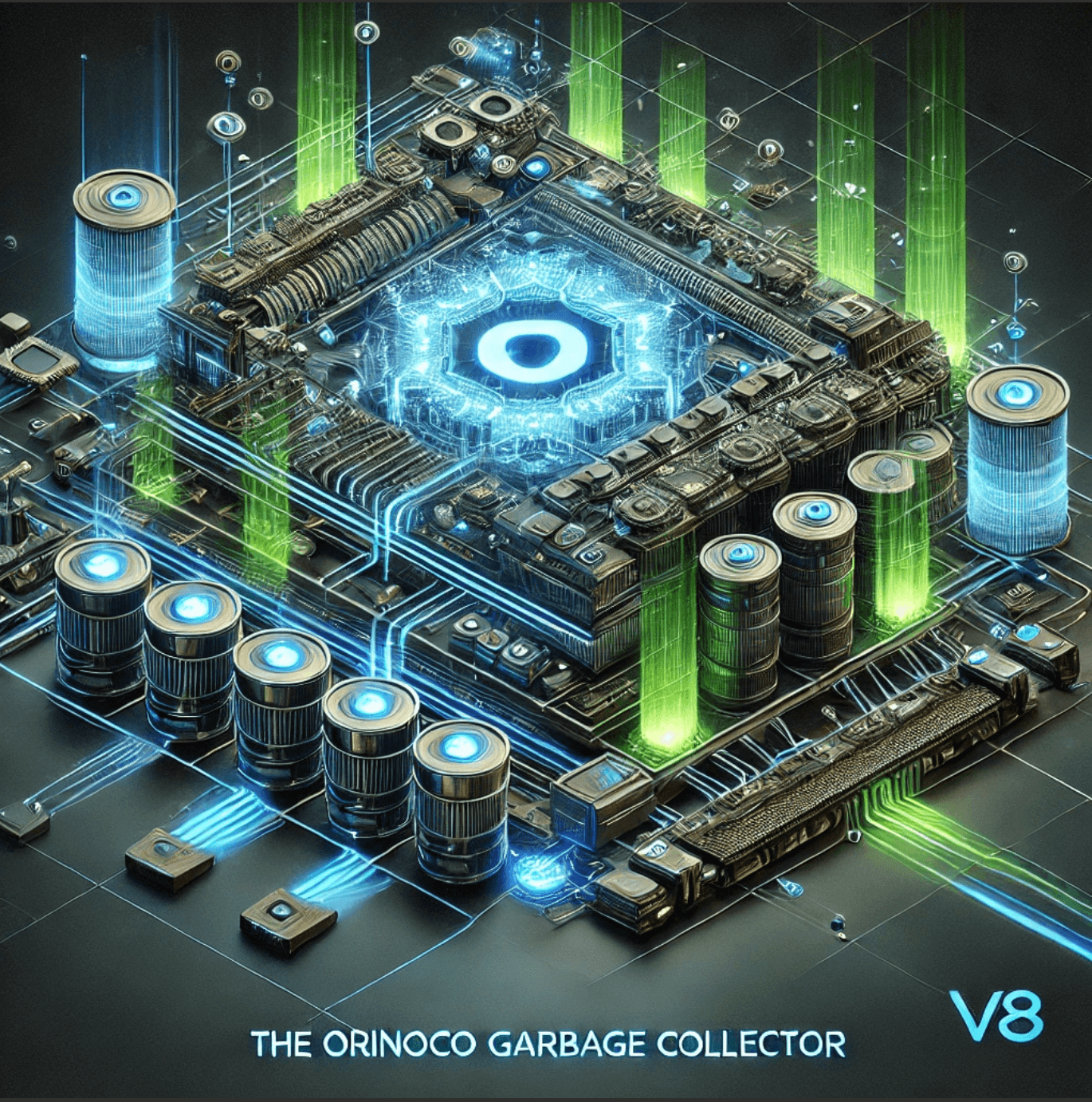JavaScript Garbage Collection: A Deep Dive
Understanding how JavaScript memory management and garbage collection work, with best practices for memory optimization.

🚀 Introduction
As JavaScript applications grow in complexity, optimizing memory management becomes crucial for performance. In Google's V8 engine, which powers Chrome and Node.js, garbage collection (GC) plays a vital role in ensuring smooth execution. Orinoco, the modern GC used in V8, has revolutionized how JavaScript memory is managed by improving parallelism, incremental collection, and pause times.
In this article, we'll dive into the detailed workings of Orinoco, explaining its phases, optimizations, and impact on performance.
🔍 How V8's Orinoco Garbage Collector Works
1. Memory Management in V8
V8 divides memory into two major areas:
- Young Generation (short-lived objects, frequently allocated and collected)
- Old Generation (long-lived objects, promoted after surviving multiple GC cycles)
Orinoco is responsible for efficiently collecting garbage in both generations while keeping JavaScript execution fast and responsive.
🚀 Orinoco's Key Phases & Optimizations
1️⃣ Scavenger (Young Generation Collection)
The young generation is collected using a semi-space copying GC:
- Objects start in the "from" space.
- When garbage collection occurs, live objects are copied to the "to" space.
- Dead objects are discarded, making memory reclaim fast and efficient.
The Scavenger runs concurrently with JavaScript execution, meaning it doesn't introduce long pauses.
2️⃣ Incremental & Concurrent Marking (Old Generation)
For long-lived objects in the Old Generation, Orinoco performs:
- Incremental Marking: Instead of pausing JavaScript execution, marking is split into small tasks and performed over time.
- Concurrent Marking: Runs in parallel with the main JavaScript thread on separate CPU cores.
This dramatically reduces GC pause times, making it ideal for high-performance applications.
3️⃣ Parallel Compaction
Orinoco also compacts memory in the Old Generation:
- It moves live objects together to reduce fragmentation.
- Runs in parallel across multiple CPU cores, avoiding long "stop-the-world" pauses.
This ensures efficient memory use and prevents fragmentation, leading to faster allocations.
4️⃣ Lazy Sweeping
Instead of sweeping unused memory all at once, Orinoco defers and spreads sweeping over time. This helps in:
- Reducing CPU load when it's not necessary.
- Minimizing frame drops in real-time applications like web animations and games.
🎯 How Orinoco Boosts JavaScript Performance
✅ Lower Pause Times: By using incremental and concurrent marking, JavaScript execution remains smooth.
✅ Better CPU Utilization: With parallel compaction and scavenging, V8 uses multiple CPU cores efficiently.
✅ Optimized Memory Usage: Orinoco reduces fragmentation and ensures faster object allocation.
✅ Seamless JavaScript Execution: The GC works in the background, ensuring high responsiveness.
🔥 Orinoco's Impact on Real-World Performance
With Orinoco, V8 can execute JavaScript with near-zero perceptible GC pauses. This is especially crucial for:
- Web applications (low input lag, smooth animations)
- Node.js servers (faster request handling)
- Gaming & real-time apps (no stutters due to GC)
Google's benchmarks show over 50% reduction in GC-related latency, making Orinoco a game-changer for modern JavaScript engines.
🏁 Conclusion
The Orinoco garbage collector in V8 is a highly optimized, parallel, and incremental GC designed for low-latency JavaScript execution. With its scavenging, incremental marking, parallel compaction, and lazy sweeping, it ensures fast memory allocation, minimal pauses, and improved performance.
For developers working with Node.js, Chrome, or any JavaScript-heavy applications, understanding Orinoco can help write memory-efficient, high-performance code.